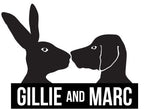Why we believe a Kitschy Monstrosity is a good thing! – Gillie and Marc speak out
Published Dec 2018
Gillie and Marc’s mission, as artists, has always been centred on creating work that connects with as many people as possible. In elaborating further, Marc explains; “we make art for 95% of the mass public, and 5% of the elite”.
Within the realm of public art, this approach is significant when considering the diverse audiences that can encounter the work. For instance, when a monumental sculpture is placed in Astor Place in New York (as Gillie and Marc’s ‘The Last Three’ is presently) people do not need to enter an art institution or gallery to see it, but rather, could just be on their morning commute to work.
Recognising this, Gillie and Marc create public artwork designed to have a wide appeal, speaking to not only those within the artistic community, but also to those who perhaps do not engage much with art otherwise. In order to do this, they willingly embrace certain visual cues which have proven effectiveness in resonating with broad audiences. Some of these include exploring the use of vivid colour and larger-than-life-scale, or experimenting with provocative forms and surprising compositions.
Moreover Gillie and Marc’s public art works intentionally play off these aesthetic tropes, specifically with the purpose to illicit a response from the viewer. This puts the ball in their court, inviting the spectator to take the visceral experience of beholding the work and deduce their own meaning from it.
On the other hand, if an art work is devoid of legible visual signposting altogether, this can prove challenging to relate to it. Gillie reiterates this idea by asking; “how can you engage with work that you don’t understand?”, to which Marc adds, “the worst public art is the kind that doesn’t engage the wider community”.
This kind of accessibility, or democratisation of art, is not favoured by everyone. Art critic Jerry Saltz has recently described Gillie and Marc’s latest rhino sculpture work as a ‘Kitschy Monstrosity’.
To this Gillie and Marc ask; “who says art can’t be kitsch?”.
Some would describe ‘kitsch’ to be in poor taste (perhaps appreciated in an ironic way), yet exuding an excessive garishness or sentimentality. On the other hand, ‘kitsch’ can also be read as playful, relatable and fun – all qualities that Gillie and Marc believe many people could relate to in an artwork.
Whether or not you agree with Jerry Saltz’s assessment, as Gillie points out; “creating popular art is challenging, it shows a really careful consideration toward the audience”. With this in mind, Gillie and Marc will continue making public ‘monstrosities’, which challenge some people’s traditional conceptions of what art is, and what it can be.


